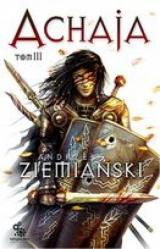
Virtually all of the advances to the mage and cleric classes have been tossed because of this rigidity. Some of the more interesting feats from the pen-and-paper rules have been omitted, perhaps because they hadn't been written when Stormfront needed to establish the feature set for its game. Feats, introduced to allow the player to individualize his character with special attributes, are automatically selected for the player.

Character development is extremely limited, in direct opposition to the way that this aspect of D&D is enhanced in the Third Edition rules. However, there are significant differences to the way that such things have been implemented. The movement rate, the new point pool system used to "roll up" characters, all of the new skills and feats, and much more can also be found in the new Player's Handbook and Dungeon Master's Guide. The result is a muddled mess that follows the new rules in spirit alone. As a result, Stormfront must have spent a good chunk of the design process unclear about what changes the Third Edition would bring to the table. Until you get well into the plot, every "new" room looks a lot like the last.Īlthough Stormfront based Ruins of Myth Drannoron the Third Edition D&D rules, the company was developing the game at the same time as TSR veterans were pondering those very same rules. Perhaps some aspects of the pen-and-paper Forgotten Realms gazetteers were put to use in the maps of this fabled fallen city, but if so, they certainly didn't add any character to your explorations.

Other than that, you are given no direction in the outset of the campaign you're simply dumped at the gates of Myth Drannor and told to go to it. The plot involves the dreaded pool of radiance coming back to life and threatening New Phlan in pretty much exactly the same way as it did over a decade ago. Instead of the epic adventure supposed to span one of the most well-known locations on Faerun, Ruins of Myth Drannor is a linear trek through corridors and chambers with little or no distinctive elements. Combat would be turn-based and highly strategic, set in a living world where you could use tables for cover and barricade doors.Īside from the turn-based combat system, none of these promises has been fully realized. The adventure would be vast, incorporating authentic material from the innumerable Forgotten Realms pen-and-paper supplements and the official Third Edition Dungeons & Dragons rules. Initial press releases openly promised that the game would begin a new era in RPGs, much like that started by the Gold Box line in the late 1980s, through all sorts of new ideas. Where the original Pool of Radiance was filled with groundbreaking innovations, this latter-day sequel is more of a slave to convention. While the game may be much more stable with the version 2.1 and 2.2 patches installed (we didn't experience any of the more serious reported bugs), it still isn't worth playing, for a number of reasons.įor starters, there's the lack of inspiration.
#Dungeons and dragons gold box for windows 10 install#
Two bug-fixing patches-the first to correct the install program problems and the second to repair a number of serious gameplay issues-have done nothing to change the unalterable fact that Ruins of Myth Drannor is a dull dungeon crawl with numerous core design flaws that no patch could clear up. It's probably just arrogance in action, but I approached this piece with something of a "Those other guys don't know what they're talking about!" attitude.

If anything, however, these negative notions reinforced the idea that I really needed to get into this one before submitting the review. Patches soon arrived, but the disappointment lingered.īeginning the review process after the commotion had already started, I had acquired some very strong impressions of Ruins of Myth Drannor long before the game was installed. Newsgroups filled up with protests, dozens of people complaining about everything from an install program bug that could supposedly delete their Windows directory to the linear plot that was nothing like the expansive adventure that had originally been promised.

For despite taking well over two years on the development of the game, the designers at Stormfront Studios signed off on a product that was clearly rushed to stores by Ubi Soft before its completion. One short day later, those same formerly impatient fans were openly wishing that Ubi Soft had taken more time with Ruins of Myth Drannor. The game released and the wait was finally over for those impatient fans. The younger set that knows of nothing prior to Baldur's Gate has been doing the same thing since the development of this alternative to Bioware's award-winning franchise was first announced in 1999. Old-timers like myself, who fondly remember the original Pool of Radiance and the rest of the classic SSI Gold Box Dungeons & Dragons games, have been sitting on their hands for 13 years in anticipation of a sequel. We've waited a long time for Pool of Radiance: Ruins of Myth Drannor.


 0 kommentar(er)
0 kommentar(er)
